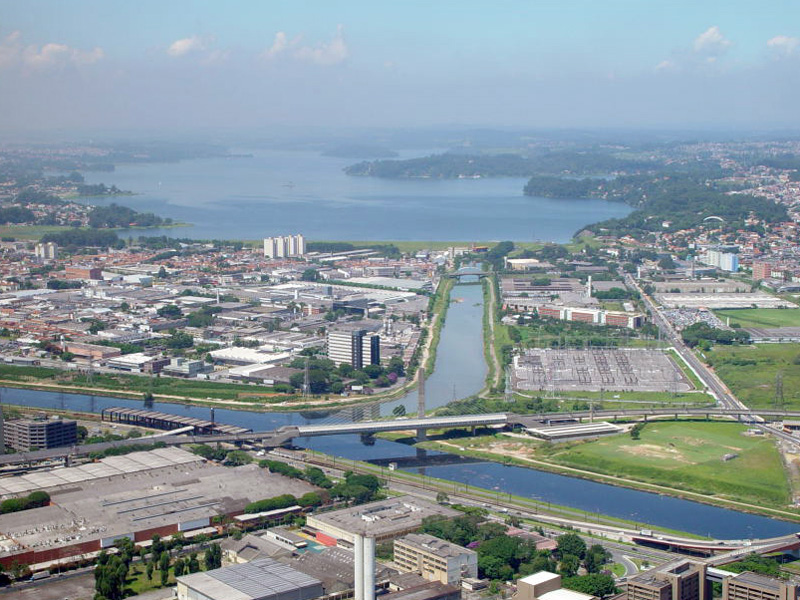São Paulo Tramway, Light And Power Company on:
[Wikipedia]
[Google]
[Amazon]
São Paulo Tramway, Light and Power Company, also known as Light São Paulo or simply Light (), was a privately owned utility company operating in
 Work began in 1901 on the hydroelectric plant in Santana de Parnaíba. It opened in 1905. In 1905 the company installed the first electric street lights on Rua Barão de Itapetininga. In 1906 the company constructed a
Work began in 1901 on the hydroelectric plant in Santana de Parnaíba. It opened in 1905. In 1905 the company installed the first electric street lights on Rua Barão de Itapetininga. In 1906 the company constructed a
São Paulo
São Paulo (; ; Portuguese for 'Paul the Apostle, Saint Paul') is the capital of the São Paulo (state), state of São Paulo, as well as the List of cities in Brazil by population, most populous city in Brazil, the List of largest cities in the ...
, Brazil from 1899 until 1981.
History
Canadians William Mackenzie and Frederick Stark Pearson founded the São Paulo Tramway, Light and Power Company in 1899. In 1900 Light São Paulo began operating the firsttram
A tram (also known as a streetcar or trolley in Canada and the United States) is an urban rail transit in which Rolling stock, vehicles, whether individual railcars or multiple-unit trains, run on tramway tracks on urban public streets; some ...
line in the city of São Paulo which ran to Barra Funda.
 Work began in 1901 on the hydroelectric plant in Santana de Parnaíba. It opened in 1905. In 1905 the company installed the first electric street lights on Rua Barão de Itapetininga. In 1906 the company constructed a
Work began in 1901 on the hydroelectric plant in Santana de Parnaíba. It opened in 1905. In 1905 the company installed the first electric street lights on Rua Barão de Itapetininga. In 1906 the company constructed a reservoir
A reservoir (; ) is an enlarged lake behind a dam, usually built to water storage, store fresh water, often doubling for hydroelectric power generation.
Reservoirs are created by controlling a watercourse that drains an existing body of wa ...
at Guarapiranga. In 1907 they installed 50 more lights on Direita Street, Rua 15 de Novembro, and Rua São Bento.
The company signed a contract with the state of São Paulo
São Paulo (; ; Portuguese for 'Paul the Apostle, Saint Paul') is the capital of the São Paulo (state), state of São Paulo, as well as the List of cities in Brazil by population, most populous city in Brazil, the List of largest cities in the ...
for the first time in 1911. By 1916 they had installed 8,605 gas lights and 864 electric street lamps in the city.
In 1927 the company won a government contract to transfer the surplus flow of the Tietê River
The Tietê River ( ) is a Brazilian river in the state of São Paulo.
The first known use of the name Tietê was on a map published in 1748 by d’Anville. The name means "truthful river", or "truthful waters”, in Tupi.
The Tietê River i ...
to feed the Henry Borden hydroelectric power plant in Cubatão
Cubatão is a city in the state of São Paulo (state), São Paulo, Brazil, 12 kilometers away from Santos (São Paulo), Santos seaport, the largest in Latin America. It is part of the Metropolitan Region of the Baixada Santista. The population i ...
, requiring the inversion of the natural flow of Pinheiros River. As part of the concession contract, the company received the right to expropriate wetlands surrounding the river basin for both its own use and city infrastructure projects, with a clause giving previous owners priority in subsequent real estate auctions. In February 1929 the region was subjected to above-average precipitation which, due to company operations (the opening of the Guarapiranga and Billings Reservoir sluices while closing the Santana de Parnaíba dam, trapping the surplus water in the metropolitan region of São Paulo) resulted in the worst flooding in the city history, the water level rising 3.45 meters above the normal levels and resulting in 38 deaths. When the water level receded, the company identified the affected areas with bronze plaques which marked them for expropriation, totaling 20.779.443 square meters (about 1/3 of the total metropolitan area). To avoid the buy-back clause the company resorted to side agreements with expropriated proprietors, only 10% of the expropriated properties returning to their original owners. Despite ample press coverage at the time, the company was never formally indicted due to political pressure.
Successors
SPTL&P's tramways were acquired by Companhia Municipal de Transportes Coletivos in 1946, SPTL&P line disappeared in the early 1960s and eventually the city's remaining tram routes by 1968 with buses or trolleybuses. In 1916 the telephone companies merged to create theCompanhia Telefônica Brasileira
Companhia Telefônica Brasileira (CTB) was a Brazilian fixed-line telephone company that provided services to the states of Rio de Janeiro (state), Rio de Janeiro and São Paulo (state), São Paulo, as well as Minas Gerais and Espírito Santo thr ...
(CTB) and now succeeded by what is now Telebrás.
During the 1930s, while Fábio da Silva Prado was mayor, electric light was brought to the rest of the city. This expansion continued under Prestes Maia in the following decades.
In 1947 the utility companies were nationalized.
In 1981 the city government under Mayor Paulo Maluf created Eletropaulo.
See also
* Brookfield Asset Management * Light S.A. * Usina Hidrelétrica Edgard de Sousa * Companhia Telefônica Brasileira (CTB) * Alexandre Mackenzie BuildingReferences
Electric power companies of Brazil Defunct energy companies of Brazil Energy companies disestablished in 1981 Energy companies established in 1899 1899 establishments in Brazil 1981 disestablishments in Brazil {{energy-company-stub